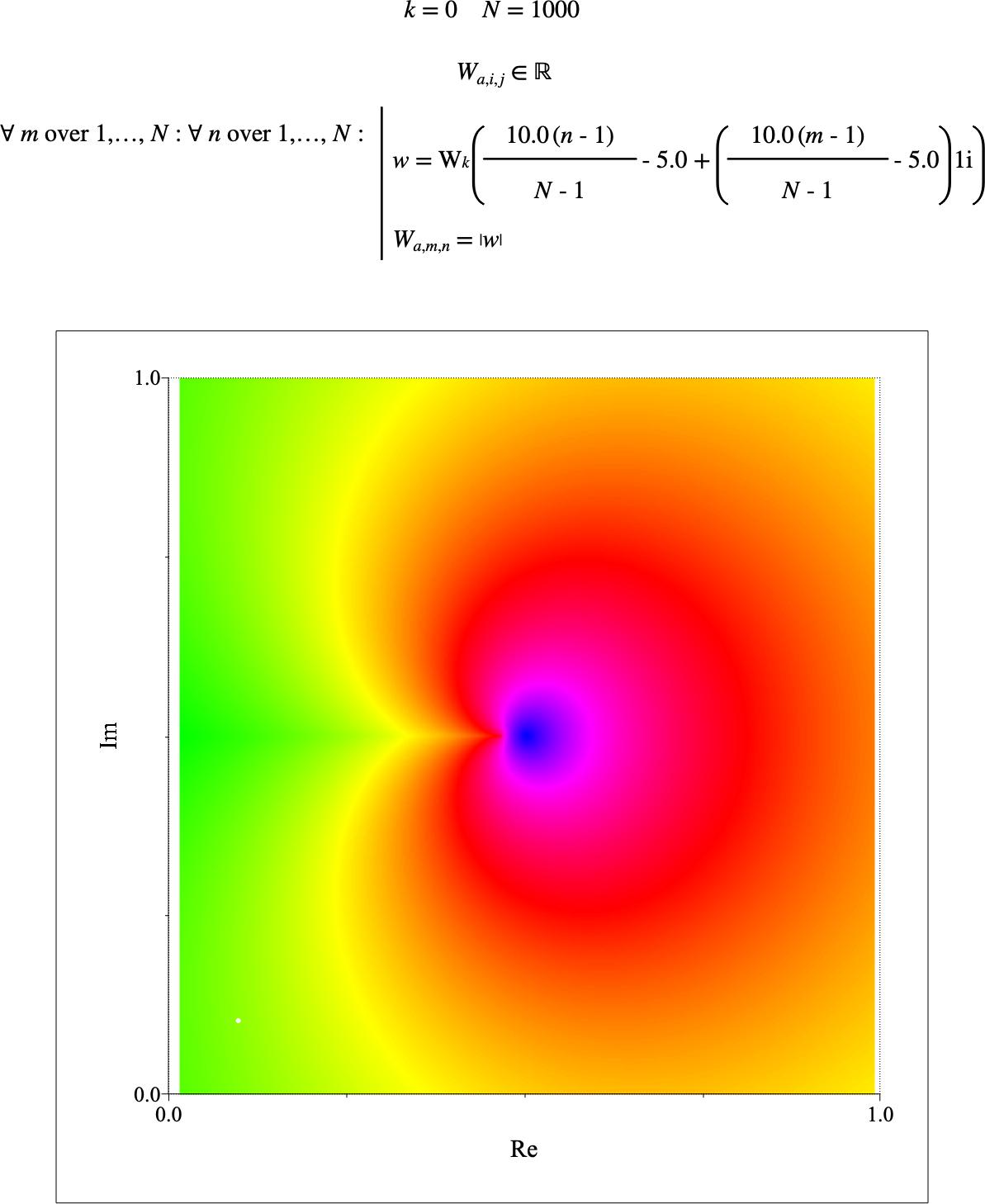\(\text{W}\)¶
You can use the Lambert W function, \(\text{W}\), to calculate the inverse if the function \(z = x e ^ x\).
You can use the \lambertw backslash command to insert this function.
\(\text{complex } \text{W} _ \text{<k>} \left ( \text{<z>} \right )\)
\(\text{complex } \text{W} _ \text{<k>} \left ( \text{<z>}, \text{<relative error>} \right )\)
The \(k\) parameter indicates the branch to calculate the Lambert W function over. The \(z\) term represents the value to calculate the result over. The \(\text{<relative error>}\) term is used to determine the allowed tolerance when Householder method is applied during the computation. The \(\text{<relative error>}\) term can be used to speed up the calculation of the result. If not specified, a value of \(4\mathit{E}\) will be used for the tolerance.
Aion uses either a modified version of the algorithm described by [8] or the faster but more limited Boost C++ library implementation which is based on the algorithm described by [9].
The Boost Fukushima algorithm is used when \(z > -\frac{1}{e}\) and real, and when \(k = 0\) or \(k = -1\). For values where \(z\) is close to \(-\frac{1}{e}\), the Fukushima algorithm may not be able to resolve a value. When this occurs the Aion implementation will fall-back on the Corless algorithm.
The Corless algorithm is used when \(z\) is complex or when the range of parameters makes the Boost Fukushima algorithm unusable.
The Aion Coreless algorithm calculates an initial guess value by one of three methods documented in [8].
A series expansion about the branch point.
A 4,4 Padé’s approximate.
A simple natural log function.
Once the initial guess value is determined, this function uses Householder’s algorithm rather than Halley’s algorithm to solve for a result.
Householder’s algorithm was selected because randomized testing on the implementation demonstrated that Halley’s method converges slowly for many parameter values. Householder’s algorithm consistently converges much more rapidly at the expense of a small number of additional operations per iteration.
Figure 218 shows the basic use of the \(\text{W}\) function.

Figure 218 Example Use Of The Lambert W Function¶
